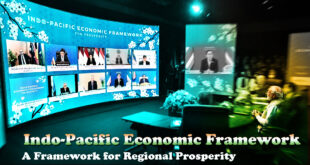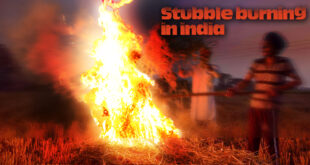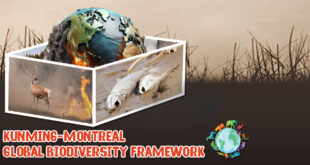How did the ideology travel from India to Canada?

The already declining ties between India and Canada have been impacted further by Canadian Prime Minister allegations that “Indian government agents” were involved in the killing of a Khalistani terrorist.
This ongoing tussle between the two countries is mainly over the Khalistan separatist movement, which once had a stronghold in India’s northern state of Punjab, and has now been reignited miles away in Canada.
Khalistan separatist movement:

- Khalistan separatist movement started in Punjb in the early 1980s, with the idea of seeking an independent, theocratic
Sikh state called Khalistan, of ‘Land of the Pure’ in Punjab and other parts of Northern India.
- The proposed boundaries of Khalistan vary among different groups. • Some claim the entire Indian state of Punjab, while others claim Pakistani Punjab and other parts of North India such as Chandigarh, Haryana and Himachal Pradesh.
- The Khalistan movement peaked in the 1980s-90s and the violent campaign included bombings, assassinations, kidnappings, and selective killing and massacres of civilians, mostly in Punjab.
- In response to the movement, and in an attempt to end militancy in the state, Indian security forces and local Punjab police responded with force.
British Play:
- The roots of Khalistan lie in the British colonial policies of the late 1800s and early 1900s that sought to divide Sikhs and Hindus.
- Sikhs were recruited into the British Army in large numbers to use against Hindu rulers who rebelled against the British Raj.
- Subsequently, after Indian independence in 1947, tensions between the state of Punjab and the central Indian government surfaced, leading to grievances amongst many Sikhs against the Indian government.
India to Canada:
- The emigration of Sikhs into Canada started in the first decade of the 20th century.
- Soldiers in the British Army passing through British Columbia were attracted by the fertile land they saw.
- By the 1970s, Sikhs were a visible section of Canadian society. • The violence took on an international dimension in 1985 when Khalistani separatists based in Canada exploded a bomb on ‘Kanishka’, an Air India flight en route from Toronto to New Delhi, killing all 329 people on board, including 82 children under the age of 13. That incident remains the deadliest terrorist attack in Canadian history.
- By the end of the 1990s, the Khalistani movement in India was almost in its last leg, but it grew in Canada.
Hypertension as a public problem in India
The World Health Organization (WHO) released its first-ever report on the global impact of hypertension this Tuesday, highlighting the devastating consequences of this widespread, yet often neglected condition.
WHO Report
- Reveals that hypertension affects one in three adults worldwide.
- The number of people living with hypertension has doubled from 650 million in 1990 to a staggering 1.3 billion in 2019, with nearly half of these unaware of their condition.
Diagnosing and treating hypertension is the simplest and most basic care even a nurse could give in the absence of a doctor at a primary health facility, there is no excuse for any country failing to scale up
- Four out of five people with hypertension are inadequately treated. India ‘s performance
- Particularly among younger adults and those from lower socioeconomic backgrounds.
- Only about 22.5% of people with high blood pressure had it under control in the most recent period from 2016 to 2020
- Increased from 20.4% to 22.8%, especially among those aged 15-49.
Other NEWS
| Women’s quota Bill cleared in Rajya Sabha | • The Constitution (128th Amendment) Bill, or the Nari Shakti Vandan Adhiniyam, and its six clauses were passed with all 214 members present in the Upper House voting in favour of them.
• Amendments moved by some Opposition members against the provision that the law will come into force only after a census and delimitation exercise were defeated in a voice vote as none of the members demanded a ‘division’ on the amendments. |
| CM Unveils ‘Statue of Oneness’ in Omkareshwar | • Unveiled a gigantic statue of Adi Guru Shankaracharya on the Mandhata hillock at Omkareshwar in Khandwa district.
• Called the Ekatmata ki Murti (Statue of Oneness) o the 108-feet-tall statue portrays o The 8th-century Indian philosopher and theologian o Who consolidated the doctrine of Advaita Vedanta. • The unveiling is part of the ambitious Ekatma Dham project |
| China, U.S. and India absent at U.N.’s Climate Ambition Summit | • China, the U.S. and India — which collectively account for about 42% of global greenhouse gas emissions and are the top three emitters in that order
• Representatives from 34 states and 7 institutions were given the floor on the day of the summit • All the G-20 governments will be asked to commit to presenting, by 2025, more ambitious economy wide Nationally Determined Contributions |
 Chinmaya IAS Academy – Current Affairs Chinmaya IAS Academy – Current Affairs
Chinmaya IAS Academy – Current Affairs Chinmaya IAS Academy – Current Affairs



